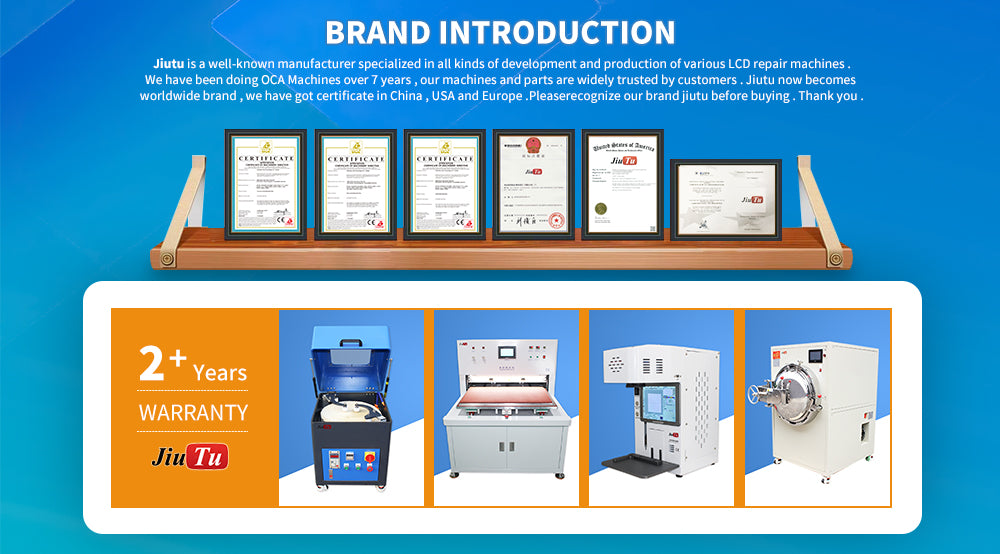swisspatch33
About
- Username
- swisspatch33
- Joined
- Visits
- 2
- Last Active
- Roles
- Member
Activity
-
In today's fast-paced technological landscape, the demand for high-quality displays is at an all-time high. Laminating LCDs has become a critical process in the production of smartphones, tablets, and other electronic devices, ensuring that screens not only look impressive but also offer resilience and protection. The craft of mastering LCD laminating requires a deep understanding of diverse techniques and the right tools, particularly the lcd laminating machine.
As a key component in this process, the OCA laminator plays a pivotal role in achieving a seamless bond between the LCD and the glass, minimizing issues such as bubbles and imperfections. Whether you are a experienced professional or a newcomer to the world of display manufacturing, understanding the intricacies of different bonding machines, such as the machine for bonding COF and ACF bonding machine, can considerably enhance your results. This guide will walk you through crucial techniques and useful tips to help you achieve the most out of your LCD laminating endeavors.

Grasping Liquid Crystal Display Laminating Devices
Liquid Crystal Display laminating machines are essential equipment in the electronic manufacturing industry, notably for fabricating premium displays. These devices use different technologies such as OCA adhesion and vacuum laminating to guarantee that the sheets of glassy material and LCD are flawlessly bonded together. The precision offered by these devices minimizes the frequency of defects and enhances the complete aesthetic standard of the screen.
The process of LCD lamination typically involves the use of specialized gluing adhesion machines, which may feature Anisotropic Conductive Film and optically bonding devices. These machines are engineered to apply a uniform coating of glue that adheres to both the glassy material and the LCD. The utilization of vacuum devices assists in the extraction of gas blisters during the adhesion process, making certain that the final result is free from flaws like Liquid Crystal Display blisters that can influence display performance.
An essential aspect of operating with Liquid Crystal Display lamination devices is understanding the different characteristics and capabilities they offer. Many models come equipped with blister eliminator devices or gas removing machines that play a crucial role in achieving a pristine result. Additionally, some advanced machines include mini bubble eliminator features to address minor flaws, rendering them versatile for different production needs. Mastery of these machines equips technicians with the expertise required to produce superior displays that meet market standards.
Vital Strategies for Efficient Laminating
When operating with an LCD laminating machine, comprehending the use of the appropriate adhesive is important for realizing ideal results. Using Optically Clear Adhesive enhances the transparency and durability of the connected layers, making it a popular choice for Liquid Crystal Display screens. Verify that the adhesive is consistently applied across the surface, as uneven application may result in air pockets or weak spots in the bond. A accurately tuned laminator OCA can mitigate issues such as bubbling, ensuring a seamless finish.
Another crucial technique involves controlling the vacuum process during lamination. Utilizing a vacuum laminating machine properly removes air from between the LCD and its protective layer. This is critical in achieving a strong bond without bubbles. The ideal vacuum pressure may differ based on the specific machine and adhesive being used, so it's crucial to refer to the manufacturer's guidelines. Additionally, employing a bubble remover machine after the first lamination can help get rid of any remaining air pockets.
Heat and tension settings on your laminating machine also play a critical role in effective lamination. An ideal balance needs to be achieved to cure the adhesive properly without damaging the Liquid Crystal Display or glass layers. Consistently check and maintain your equipment to confirm consistent performance. Mastering these techniques will assist you reach top-notch results with your LCD laminating equipment, ensuring superior displays for a variety of applications.
Troubleshooting Regular Laminating Issues
While operating using an LCD laminate device, you may encounter various standard problems that can influence your laminating workflow. The common issue is the presence of bubbles, that can form at the laminating phase. These air pockets, typically called air bubbles, can reduce the visibility and aesthetics of the final product. To resolve this, ensure that the areas of the LCD and the lamination materials are free of impurities and clear of contaminants. Using acf bonding machine or an air removing machine can also aid in removing buried air pockets successfully.
Another issue you may experience is weak adhesion between the LCD and the lamination layer, that can compromise the long-term durability. This may result from using an inappropriate adhesive bonding machine or improper settings on your laminator OCA. To alleviate these issues, assess the compatibility of your adhesive materials and the equipment parameters. ACF bonding machines are designed for particular bonding needs, so make sure you are employing the correct equipment for your project.
Lastly, be aware of the temperature and pressure settings when working with your vacuum laminating machine. Inadequate heat can cause incomplete curing of the adhesive, while high pressure can cause compromised components. Consistently check your vacuum laminator to confirm it is operating within the recommended parameters for optimal results. Changes in the settings may be needed based on the materials being used and the complexity of the laminating task.
September 21